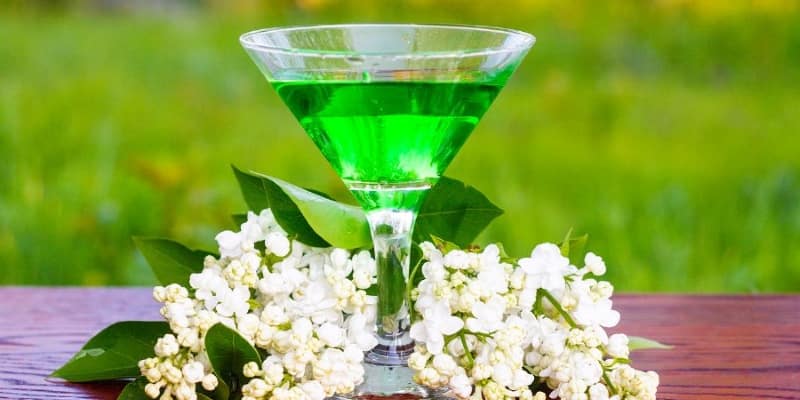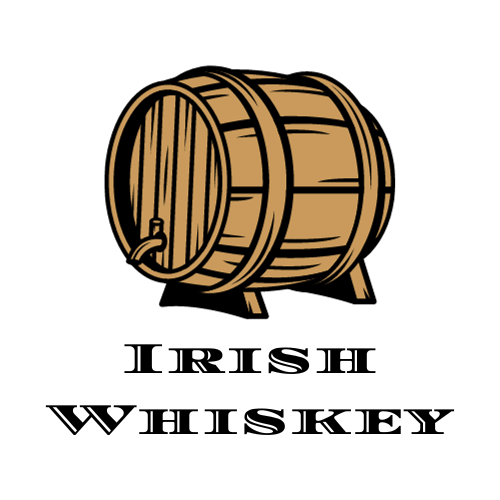Do you have a fascination for the mysterious and enticing world of absinthe? If so, you’ll be delighted to learn that making homemade absinthe is not only possible but also easily achievable.
In this article, we will guide you through a simple and straightforward process that allows you to create your very own absinthe in the comfort of your own home. Whether you’re a seasoned absinthe enthusiast or curious about exploring this intriguing drink for the first time, our step-by-step instructions and useful tips will ensure that you can enjoy the unique flavor and allure of absinthe in no time.
So, let’s embark on this exciting journey together and unlock the secrets of homemade absinthe. But first, let’s clear some common doubts you may have.
Choosing the Ingredients
When it comes to making homemade absinthe, choosing the right ingredients is crucial to achieving the authentic taste and aroma of this iconic liquor. Let’s dive into the selection process for herbs and spices, base alcohol, and water source.
Selection of Herbs and Spices
To start off your absinthe-making journey, you need to carefully select the herbs and spices that will give your homemade absinthe its characteristic flavor profile. Traditional recipes often call for ingredients such as wormwood (Artemisia absinthium), anise, fennel, hyssop, and lemon balm.
Consider the unique flavor combinations you wish to achieve and ensure that the herbs and spices you choose are of high quality. It’s important to source fresh and organic herbs whenever possible for the best results.
Choosing the Base Alcohol
The base alcohol used in this production is an essential component that sets the foundation for the drink. Some enthusiasts may prefer to add their own personal touch by experimenting with different types of spirits, deviating from the commonly used high-proof neutral spirit like vodka.
Take into account the quality and purity of the alcohol you select, as it will greatly influence the final taste of your homemade absinthe. Opt for a spirit that is smooth, clean, and devoid of any unwanted flavors or impurities.
Considering the Water Source
Avoid using tap water, as it may contain chemicals or minerals that can alter the flavor of your absinthe. Bottled spring water or distilled water are excellent choices that will allow the true essence of your carefully selected ingredients to shine through.

Preparing the Herbs and Spices
Now that you’ve gathered your ingredients, it’s time to prepare the herbs and spices for infusion and blending. Let’s go through the necessary steps to ensure their flavors are extracted to perfection.
Gathering the Required Ingredients
Before you begin preparing the herbs and spices, make sure you have all the necessary ingredients on hand. Check your recipe and gather all the herbs, spices, and additional flavoring agents you will need in the required quantities. This will make the preparation process smoother and more efficient.
Drying and Crushing the Herbs
To unlock the full potential of the herbs and spices, it is essential to dry them properly. Spread them out in a well-ventilated space away from direct sunlight and moisture. Once they are completely dry, carefully crush them using a mortar and pestle or a spice grinder.
Blending the Ingredients
Now that your herbs and spices are ready, it’s time to blend them together. Consider the ratios specified in your recipe or experiment with different combinations to achieve your desired flavor profile. Gently mix the crushed herbs and spices, ensuring that they are evenly distributed.
Blending the ingredients well will help create a harmonious flavor profile in your homemade absinthe, capturing the essence of each herb and spice in every sip.
Distilling the Absinthe
The distillation process forms the heart of absinthe production, where the necessary compounds are extracted and concentrated. Let’s go through the essential steps to ensure a successful distillation process.
Setting Up the Distillation Equipment
Before you begin distilling your absinthe, ensure that your distillation equipment is set up correctly. Double-check that all connections are secure, the condenser is properly attached, and the thermometer is in place to monitor the temperature.
Pay close attention to safety precautions, as the distillation process involves heat and flammable substances. Ensure good ventilation in the area to avoid any potential risks.
Creating the Absinthe Mixture
In order to distill absinthe, you’ll need to create the absinthe mixture or “mash.” This involves combining the base alcohol with the prepared herbs and spices. Carefully measure and add the required quantities of each ingredient to a clean, non-reactive container.
Give the mixture a gentle stir, making sure that all the herbs and spices are immersed in the alcohol. This will allow for the extraction of flavors during the distillation process.
Running the Distillation Process
With your distillation equipment set up and the absinthe mixture prepared, it’s time to start the distillation process. Heat the mixture slowly until it reaches its boiling point. Throughout the process, monitor the temperature closely to prevent any fluctuations that could affect the quality of the distillate.
As the mixture boils, the alcohol vapor will rise and pass through the condenser, where it will be cooled and transformed back into a liquid. Collect the distillate and discard any initial portions that may contain undesirable compounds. The resulting distillate is the essence of your homemade absinthe.

Coloring and Flavoring the Absinthe
Once the distillation process is complete, it’s time to add the finishing touches to your homemade absinthe. This includes adding natural coloring agents and infusing additional flavors to enhance the complexity of the final product.
Using Natural Coloring Agents
Traditionally, absinthe obtains its distinct green color from the natural chlorophyll found in herbs like wormwood and spinach. To achieve the characteristic green hue, you can infuse your distillate with chlorophyll-rich herbs or use natural coloring agents such as spinach juice.
Alternatively, you may choose to experiment with other colors such as amber or clear absinthe. Some natural coloring agents used to achieve these hues include saffron or caramelized sugar respectively.
Infusing Additional Flavors
To elevate the flavor profile of your absinthe, you can infuse additional flavors after the distillation process. This can be done by adding various herbs, spices, fruits, or botanicals to the absinthe distillate.
Experiment with different combinations and ratios to find the perfect balance of flavors that complements the character of your absinthe. Remember to let the infusion process take place over time, allowing the flavors to develop and marry together harmoniously.
Determining the Right Amounts
When coloring and flavoring your homemade absinthe, it’s crucial to strike the right balance. Start with small additions of coloring agents or flavors and allow for tasting and adjustment along the way.
Keep in mind that the flavors and colors will intensify over time, so proceed with caution to avoid overpowering the delicate balance of your absinthe. It’s always better to start conservative and add more if desired.
Also Check: How To Make Delicious Brandy Cream?
Diluting and Bottling the Absinthe
As your homemade absinthe nears its final stage, it’s time to dilute it to the desired alcohol proof, filter it to remove any impurities, and bottle it for long-term storage.
Calculating the Required Dilution
To reach the desired alcohol content, you’ll need to dilute your green spirit with water. The traditional dilution ratio for absinthe is typically one part absinthe to three to five parts water, depending on personal preference.
Take into account the strength of your distillate and the intensity of the flavors. Experiment with different dilution ratios until you find the perfect balance that brings out the complexity of the green spirit while ensuring a smooth and enjoyable experience.
Filtering the Absinthe
Before bottling your absinthe, it’s important to remove any impurities that may affect its clarity and taste. Filtering the green spirit can be done using a fine mesh or cheesecloth to strain out any remaining plant particles or sediment.
Patience is key during this step, as it may take some time for the absinthe to pass through the filter. Refrain from squeezing or forcing the liquid through, as it can agitate the sediment and cloud the resulting product.
Bottling and Labeling the Final Product
With your homemade absinthe filtered and ready, it’s time to bottle and label it for storage or gifting. Choose glass bottles that are suitable for long-term storage and ensure they are clean and sterilized before filling them with your precious creation.
When labeling your homemade absinthe bottles, consider using informative and creative labels that showcase the unique characteristics and ingredients of your green spirit. Add a personal touch with custom designs or handwritten notes to make it truly special.

Source: TheTechBrain AI
Storing and Aging the Absinthe
Choosing the Suitable Storage Environment
To maintain the quality of your homemade absinthe, it’s essential to store it in a suitable environment. Absinthe should be kept away from direct sunlight, excessive heat, and extreme temperature fluctuations, as these can degrade the flavor and color over time.
Choose a cool, dark place with a consistent temperature for storing your green spirit. A cellar, a dedicated cabinet, or a temperature-controlled room are all excellent options to ensure proper storage conditions.
Period of Maturation
The maturation period for homemade absinthe can vary depending on personal preference and the desired flavor development. While some absinthe enthusiasts believe that aging absinthe for months or even years improves its complexity, others prefer to consume it soon after production.
Experiment with different maturation periods to discover the aging time that suits your taste. Regularly sample your homemade green spirit during the maturation process to track its evolution and determine the ideal point of enjoyment.
Proper Aging Techniques
To facilitate the aging process, it’s crucial to properly seal the bottles and minimize oxidation. Make sure the bottles are tightly sealed with cork stoppers or screw caps to prevent any air exchange that could alter the flavors.
During the maturation period, you may choose to periodically rotate the bottles or gently shake them to encourage the interaction between the flavors and achieve a more homogenous blend. However, exercise caution as excessive agitation can disrupt the sediment and cloud the absinthe.
FAQs
What is the main ingredient in absinthe?
The main ingredient in absinthe is wormwood (Artemisia absinthium), a bitter herb that imparts a distinctive flavor to the drink. Other traditional ingredients include anise and fennel, which contribute to the licorice-like taste commonly associated with green spirit.
Can I use any alcohol as the base for homemade absinthe?
How long does the entire absinthe-making process take?
The entire absinthe-making process can take anywhere from a few days to several weeks, depending on various factors such as the duration of herb drying and the desired aging period. Patience is key when making homemade green spirit, as allowing ample time for each stage will result in a more refined and enjoyable final product.
Conclusion
Congratulations on embarking on the exciting adventure of making homemade absinthe! The careful selection of ingredients, thorough preparation, precise distillation, thoughtful coloring and flavoring, meticulous dilution and filtration, and proper storage and aging techniques all contribute to the creation of a unique and flavorful absinthe.


